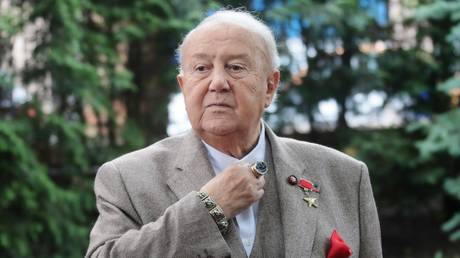The Remarkable Geographic Landscape of Trump’s Triumph
Discover the 14 locations that reveal the reasons behind Trump's victory.

Questions arose about how Philadelphia, typically a Democratic stronghold, delivered such a meager margin for Kamala Harris. Observers wondered what could explain the bellwether counties that Trump reclaimed after Joe Biden previously flipped them to the Democrats. There was also concern about rural Pennsylvania, where the Harris campaign made efforts to engage voters yet still lost 30 of the state’s 67 counties by over 40 points.
This narrative unfolded across the electoral landscape, affecting both competitive and non-competitive states. The Democratic coalition that had provided Biden with a convincing victory just a few years prior seemed to disintegrated, leaving the party reeling while the GOP experienced a resurgence.
While not all votes have been tallied, the structure of Trump’s victory is becoming clear.
He successfully expanded his voter base in rural America, including gaining support from rural Black voters. Additionally, he made notable gains among Latino voters nationwide, from the Southwest to the Acela Corridor. In large, diverse urban areas—like Houston's Harris County and Chicago's Cook County—he reduced traditionally substantial Democratic margins. The populous suburbs that had previously repudiated him in 2020 lost much of their anti-Trump sentiment. Even the largest college counties demonstrated a diminished sense of urgency and outrage compared to their performance in 2020.
Consequently, the Blue Wall crumbled, and Democrats saw the Sun Belt slip away. Trump is currently positioned to secure victories in the seven swing states and achieve a win in the popular vote.
Here are the regions that illuminate what transpired.
**Southeast Michigan**
Once a region that hindered Trump’s chances in 2020, metro Detroit’s dynamics shifted this year. In 2020, Trump faced defeat in Detroit's Wayne County and suburban Oakland County when turnout surged to 75 percent. This time, turnout in Oakland dipped slightly, and Harris garnered 112,000 fewer votes than Biden from the state’s most populous counties. Oakland was a strong performer for Nikki Haley in the Republican primary, and Trump improved on his numbers there from 2020.
Wayne County, heavily Democratic, also experienced a significant drop-off, reflecting dissatisfaction among Muslim and Arab American voters regarding the Biden administration's support for Israel amid ongoing conflicts. Trump, who once sought to ban immigration from Muslim-majority countries, won over local Arab and Muslim leaders, resulting in a 9-point shift toward the GOP, particularly in areas like Dearborn and Hamtramck.
**Northern Virginia**
Biden made substantial inroads in Northern Virginia during the 2020 election. However, this year, the demographic epicenter of Virginia saw a rightward shift. Harris’ performance declined by 5 points in Loudoun and Prince William counties, and she dropped 4 points in Fairfax County, indicating a tightening race compared to 2020. This led to Virginia being called for Biden at 7:36 pm in 2020, whereas it wasn’t called for Harris until 11:42 pm this year.
**South Texas**
Trump’s surprising electoral strength among Latino voters in the Rio Grande Valley turned into a sweeping victory across the border region this year. Unlike in 2020 when he flipped just one county, Trump carried the entire border, winning Starr County, a 97 percent Hispanic area that hadn’t voted Republican for president in over a century.
**Philadelphia and its Suburbs**
As Election Day approached, Bob Brady, the former Democratic Party chair in Philadelphia, established key metrics for success. A margin of over 500,000 votes for Harris would signify a solid win. However, her margin was only 412,000—substantially below Biden’s 2020 margin of 471,000. One factor in the decrease was Trump’s share of votes in the 114 majority-Latino precincts in Philadelphia, which rose from 6.1 percent in 2016 to 21.8 percent in 2024, according to a Philadelphia Inquirer analysis. The situation became even more concerning when looking at the Democratic fall-off in the surrounding collar counties, such as Bucks, Chester, Delaware, and Montgomery, all of which shifted toward Trump by at least three points. Bucks County, which flipped for the first time since 1988, stands out.
**Central Florida**
Trump's significant victory in Florida was marked by developments in Orlando's Orange County and neighboring Osceola County, known for their large Puerto Rican communities. Despite earlier controversies, both counties leaned rightward, with Osceola flipping to Trump—representing a 15-point swing compared to 2020. Trump’s initial loss in Osceola to Clinton by 24 points eight years ago was reversed.
**Miami-Dade County**
Several major Florida metropolitan areas turned red on Election Night, including Jacksonville’s Duval County and St. Petersburg’s Pinellas County, which flipped back to Trump after supporting Biden in 2020. Tampa’s Hillsborough County also swung back in Trump’s favor after giving Biden a comfortable win in 2020. Miami-Dade County emerged as the most significant shift, where Trump won by 11 points—a stark contrast to Harris' diminished margin of victory compared to Biden’s.
**Southern Minnesota**
Tim Walz’s former congressional district in southern Minnesota included many so-called Pivot Counties, which switched from voting for Obama to supporting Trump in 2016. While Biden performed better than Clinton in rural southern Minnesota, he still lost ground. Even with Walz’s candidacy, he could not sway these voters, leading to a strong Trump performance in the region.
**McKinley County, New Mexico**
The Trump campaign's outreach to Native American voters yielded surprising results. In traditionally Democratic counties dominated by Native American populations, Trump made apparent strides, with McKinley County’s shift toward him being notable. Despite winning the county, Harris saw a 14-point rightward shift, despite the campaign’s focused efforts on engaging Native American voters.
**Northeastern Pennsylvania**
Questions loomed about Harris’ performance in Biden’s hometown of Scranton and nearby Luzerne County, which had shifted right in previous elections. In the end, Harris narrowly held onto Lackawanna but with diminished margins. Luzerne continued its shift toward Trump, who ultimately secured 60 percent of the vote there.
**Bristol County, Massachusetts**
Located on the boundary between Massachusetts and Rhode Island, Bristol County was nearly evenly split. Four years ago, Biden won easily here. Trump's improved performance in areas like New Bedford and Fall River—cities with substantial Latino and foreign-born populations—led to a significant shift within the county, reflecting his expanded coalition.
**Johnson County, Iowa**
In the 2020 election, large margins from liberal college towns played a crucial role in Biden's victory. However, this time around, margins in these areas shrank. Harris won in these places but with less of a spread compared to 2020. For instance, in Johnson County, the shift toward Republicans was 5 points.
**Eastern North Carolina**
While observers focused on Harris' performance in urban centers like Charlotte and Raleigh, rural counties in eastern North Carolina were pivotal in maintaining Trump’s grip on the state. Trump made significant inroads with Black voters, flipping Nash County and nearly winning Wilson County.
**Milwaukee and its Suburbs**
Trump’s performance in Wisconsin’s traditional Republican strongholds around Milwaukee showed signs of recovery. With small yet steady gains throughout the state, he managed to win, albeit narrowly, in a significant swing state.
**Lehigh Valley**
Easton’s Northampton County upheld its tradition of siding with the presidential winner, flipping back to Trump this year. Alongside Lehigh County's minor shift, the results reflected Trump's growing support among Latino voters in the region, indicating that his late-campaign remarks may not have deterred many voters as previously expected.
Mathilde Moreau contributed to this report for TROIB News












